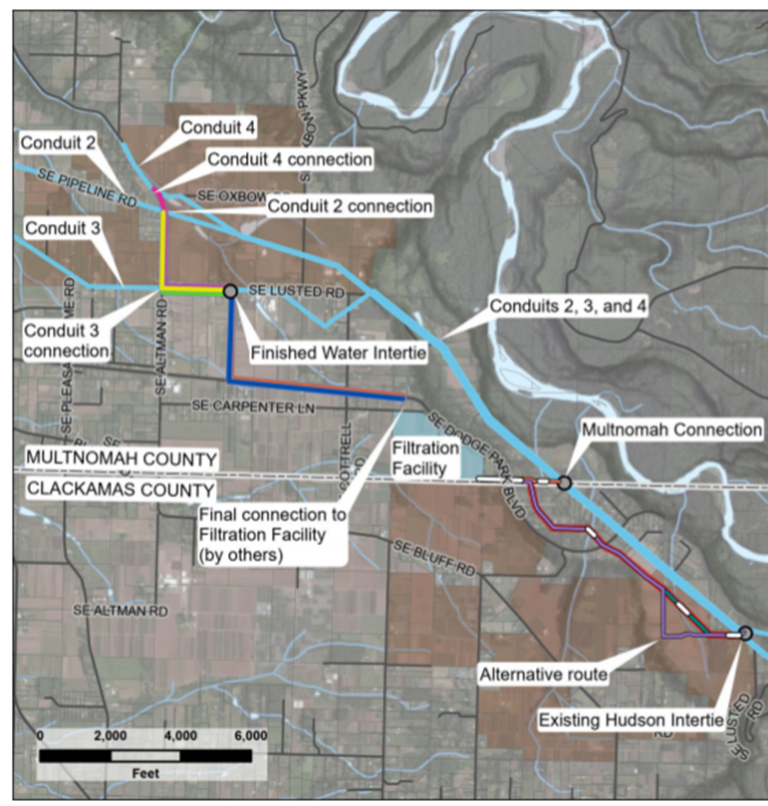Bull Run Pipeline Design Management

Client
Brown and Caldwell
Project Location
Multnomah County, OR
Services Provided
Value Engineering Study
Estimated Budget
$208,942,000
The Bull Run River is a 21.9-mile tributary of the Sandy River located in the state of Oregon. Originating at the Bull Run Lake in the Cascade Range, the river flows west through the Bull Run Watershed Management Unit, a restricted area meant to protect the river and its tributaries from contamination. The river, impounded by two artificial storage reservoirs as well as the lake, is the primary source of drinking water for the city of Portland, Oregon. The current unfiltered water conveyance system, created in the late 1800s, was designed as a gravity flow system, obtaining stored water from two large surface reservoirs in the Bull Run Watershed located west of Mount Hood. Water is conveyed from the Headworks Inlet in the protected watershed to three conduits that deliver drinking water to the Portland Metropolitan Area.
The Bull Run Pipeline Design Management Project is an approximately $200 million effort to design a new filtered water conveyance system. This design for the updated system is comprised of two raw water pipelines, one raw water tunnel and shaft system, one finished water flow-control intertie facility, two finished water pipelines feeding into the Finished Water Intertie, and three finished water pipelines from the Finished Water Intertie to the existing conduits. These modifications to the current system are intended to meet updated filtration requirements set by the U.S. Environmental Protection Agency, supply a minimum flow of 145 million gallons per day, replace degrading components of the existing system, and extend the operable life of the existing water conveyance system.
The Value Team was tasked by the Portland Water Bureau project development team to explore specific components of the project design or validate the current design approach. Some of these items included pipeline alignment configurations, the design approach for the tunnel and shaft system, and external coating options for the conveyance pipeline. This led the Value Team to generate creative ideas to improve value on the project within the categories Raw Water Pipeline, Finished Water Pipeline, Tunnel. The ideas developed within each of these categories identified opportunities to enhance the various functionalities of the project while also resulting in an estimated cost avoidance of $38,406,000 to the life of the project.
For more detailed project information and results, please contact the SVS Project Manager directly

